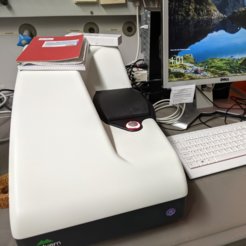
Dynamic Light Scattering

Dynamic light scattering (DLS) is a light scattering technique used to measure the size of dispersed particles based on their Brownian motion, allowing size determination of particles down to 1 nm in diameter. The basic principle is simple: the sample is illuminated with a laser beam and the fluctuations of the scattered light are detected at a known scattering angle θ by a fast photon detector. From a microscopic point of view, the particles scatter the light, imprinting information about their motion. Particles can move randomly in all directions when dispersed in a fluid environment. In the case of Brownian motion, particles constantly collide with solvent molecules, transferring a certain amount of energy. This triggers the motion of the particles. In the case of smaller particles, they are more affected because the energy transfer is more or less constant. This causes the smaller particles to move faster than the larger ones. Knowing all other parameters that have an influence on the particle motion, one can determine the hydrodynamic diameter by measuring the velocity of the particles.
Typical measurements:
>100 uL sample
Diameters between 1 nm and 1 µm.
Equipment:
Malvern Nano S90
References:
https://wiki.anton-paar.com/en/the-principles-of-dynamic-light-scattering/
Contact:
Dr. Shoupeng Cao ( 06131-379-172)
Dr. Lucas Caire da Silva ( 06131-379-581)
